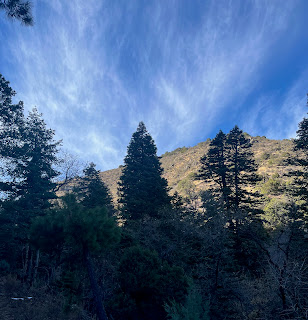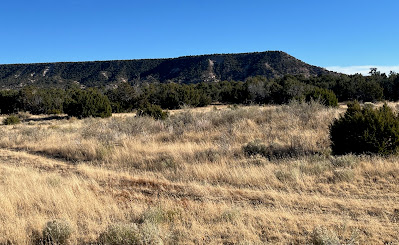Magdalena Mountains, Cibola National Forest - South Baldy Trail (FT 11)
 |
| view to Water Canyon Mesa |
 |
| new growth of Doug-firs and a few spruces |
 |
| large bent over Douglas-fir |
 |
| old trail sign |
Stopping by while heading home from the cabin a couple of days before Thanksgiving, I did this little hike in the Magdalena Mountains. I only covered a steep 3/4 of a mile (one way) of the South Baldy Trail (FT 11), but that was enough. I started from lower trailhead along FR235. The narrowness of the canyon made the trip dark, cold and snow-covered most of the way until a switchback took me out of the canyon and onto the sunny chaparral hillside of a south facing ridge.
Already sweating from the pace I chose and the 800 foot elevation gain in less than a mile, emerging onto the sun-baked hillside where it had too be close to 20 degrees warmer was the last thing I wanted so I turned around.
The trailsides are full of snags from many (mostly) Douglas-fir trees that thrived in the mesic environment ( the trail is kept clear though). There are new ones coming back in( plus a few spruces too!), but the tangle of downfall in the creek bottom is a bit ugly in all truthfulness.
There is also plentiful box-elder which I've noticed seemed to have found a niche in the narrow stretches of other canyons in the Magdalenas.
Views are great looking back down the trail which definitely salvaged the whole excursion.
Labels: hiking






















.jpeg)


.jpeg)








.jpeg)





.jpeg)
.jpeg)






